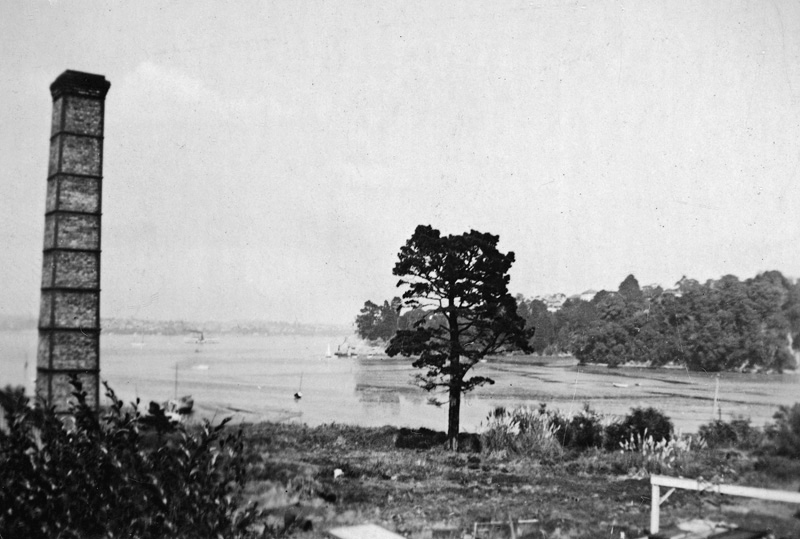The Story of
Little Shoal Bay
The Story of Little Shoal Bay
Little Shoal Bay is a highly regarded Bay, with extensive parks and recreational facilities, on Auckland’s North Shore. It was originally an estuary surrounded by cliffs with salt marshes in its upper reaches. In pre-European times, Onewa Pa on Stokes Point (now Northcote Point) was a stronghold for Ngai Tai, Ngati Whatua and Ngati Paoa. Little Shoal Bay was frequented by Maori to fish and gather shellfish. In the early 1900s, there was a Maori Orchard below Seaview Ave and a Maori Track from it up as far as Wilding Ave. Today, part of the Maori Track pathway still runs up from the Scout Den to Council Terrace beside the reserve.
There were one or two Europeans on Stokes Point in the early 1840s. In the 1850s large blocks of land on Stokes Point and Birkenhead Point were sold to settlers. By the 1880s, more intensive settlement was taking place.
By 1900, Northcote and Birkenhead Point were linked by a wooden footbridge on the Birkenhead side. Reclamation of the estuary took place progressively from the early 1900s and eventually a rough causeway and road were constructed across the Bay.
In 1902 the Birkenhead & Northcote Gas Company built gasworks on the eastern side of the Bay. The gasworks consisted of a retort, a gasometer, a massive brick chimney and many other structures including a wharf for barges to bring coal to the gasworks. Its historic concrete wall and bollards are still there.
The gasworks closed in the 1940s and was then demolished. In the 1920s there were tennis courts behind the bowling club near Wilding Ave, named after New Zealander Anthony Wilding, four times singles champion of Wimbledon (1910-13).

N0113197 Gasworks, Northcote c1920s photographer unknown
North Auckland Research Centre, Auckland Libraries
In about 1950, Le Roys Bush was created from the estate of the businessman Edward Le Roy, who lived on Hinemoa St. Lutner’s Reserve was also created on the eastern side of Seaview Ave. Today, these reserves are looked after by the Le Roys Bush Management Committee, a group of dedicated volunteers who also undertake planting projects elsewhere in the Bay.
Much of the reclamation took place in the 1950s and 1960s when the Northcote Borough Council allowed all kinds of material to be dumped there and built a rough sea wall. The tidal waters of the estuary were eventually narrowed down to a stream along the line of the channel by the present haul-out area.
In the 1950s, the Gas Company land on both sides of Council Terrace passed to the Northcote Borough Council, which used part of the land on the seaward side as a Council yard. The rest of that land was used informally as a boat haul-out area. A playing field was developed on the other side of the road and named Dudding Park after Northcote’s much-loved, long-time GP, Dr Reginald Dudding.
In the late 1960s, the Council proposed to use the old gas company land for industry. When local residents protested, the Council zoned it for holiday accommodation instead. A 99-year lease of the land on the seaward side of the road was given to a motel owner and the Kon Tiki Motel was built there. The land on the other side of the road was leased (for 99 years) as a camping ground. The road was sealed, and the stream diverted through a culvert under Maritime Terrace.
In the early 1970s, reclamation by the Birkenhead Borough Council of the wetlands on the western side of the Bay began, creating the present island in the swamp. The wetlands today are recognised as a vital component of the ecology of the Bay. Fortunately, further reclamation was stopped when three members of the community initiated a major protest. Since then, an enormous amount of work has been put into preserving and enhancing the freshwater ecology and it is now the largest remaining on the North Shore.
In 1993, unbeknown to residents, North Shore City Council sold the land and the new owners proposed to put an intensive housing development on it. As a result of strong opposition from the community, the Little Shoal Bay Action Committee (LSBAC) came into being. Its name was changed to the Little Shoal Bay Protection Society in 2008.
Today Little Shoal Bay is a vibrant and much-loved recreational space used for a wide range of activities by Aucklanders from all over the city. On any given day you will see people walking their dogs, picnicking with friends, celebrating milestones, playing cricket or football, flying kites, using the playground, playing tennis, bowls or basketball, paddleboarding, kayaking and swimming, boating, enjoying Council-run outdoor activities such as Families in the Parks or Movie in the Parks, watching the bridge lights, doing exercise and Yoga – or just sitting and peacefully watching the world go by. Those who love the Bay hope that every effort will be made to retain the parks and facilities in the Bay for generations to come.
A video produced by Dinah & Tony Holman examining the Little Shoal Bay environment in 1996 . After this video was shown to North Shore Council, a plan to introduce high density housing in the bay was abandoned. The Kon Tiki Motel and campsite were subsequently removed.
SUBSCRIBE
Sign up with your email address to receive news and updates.